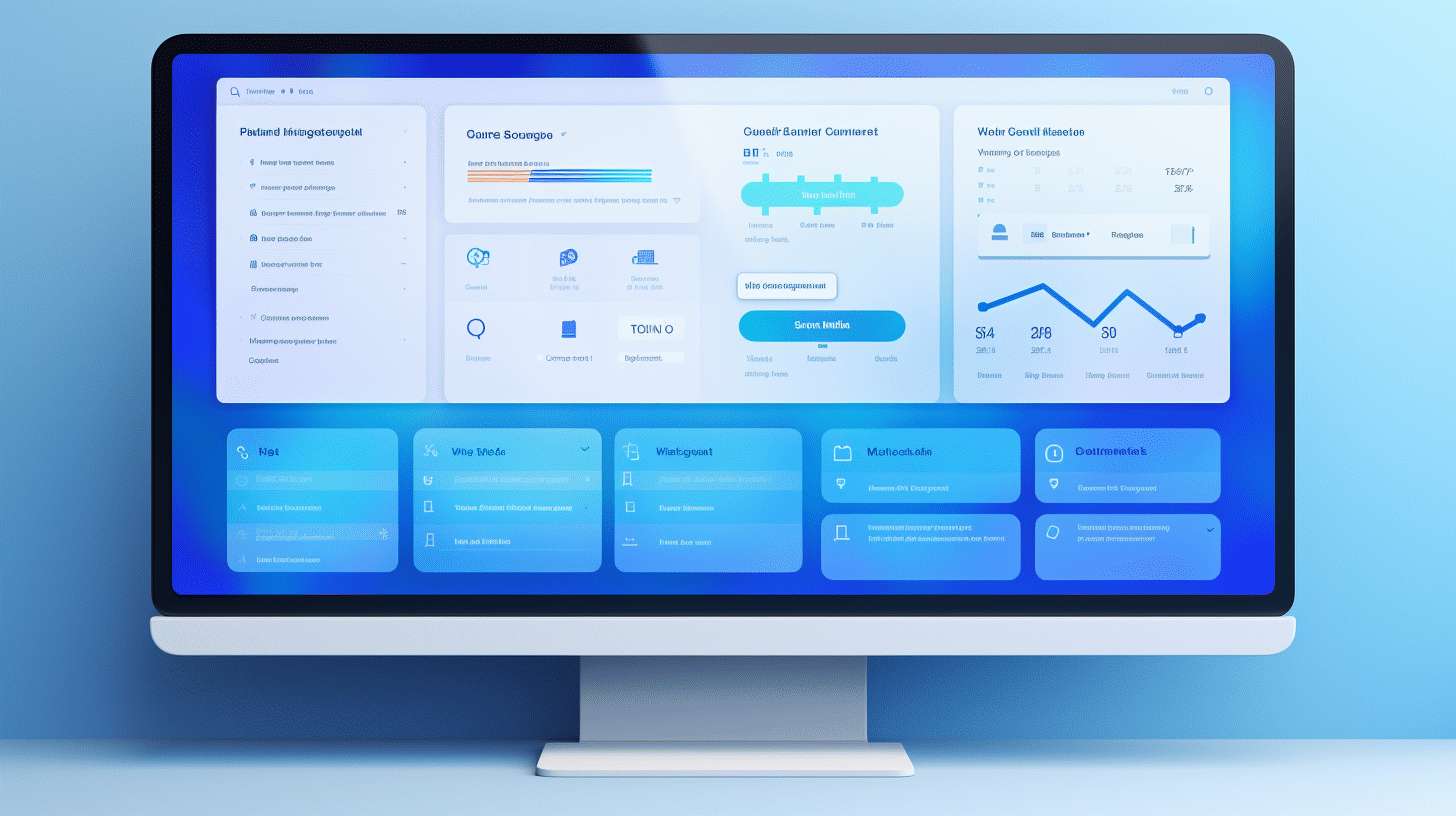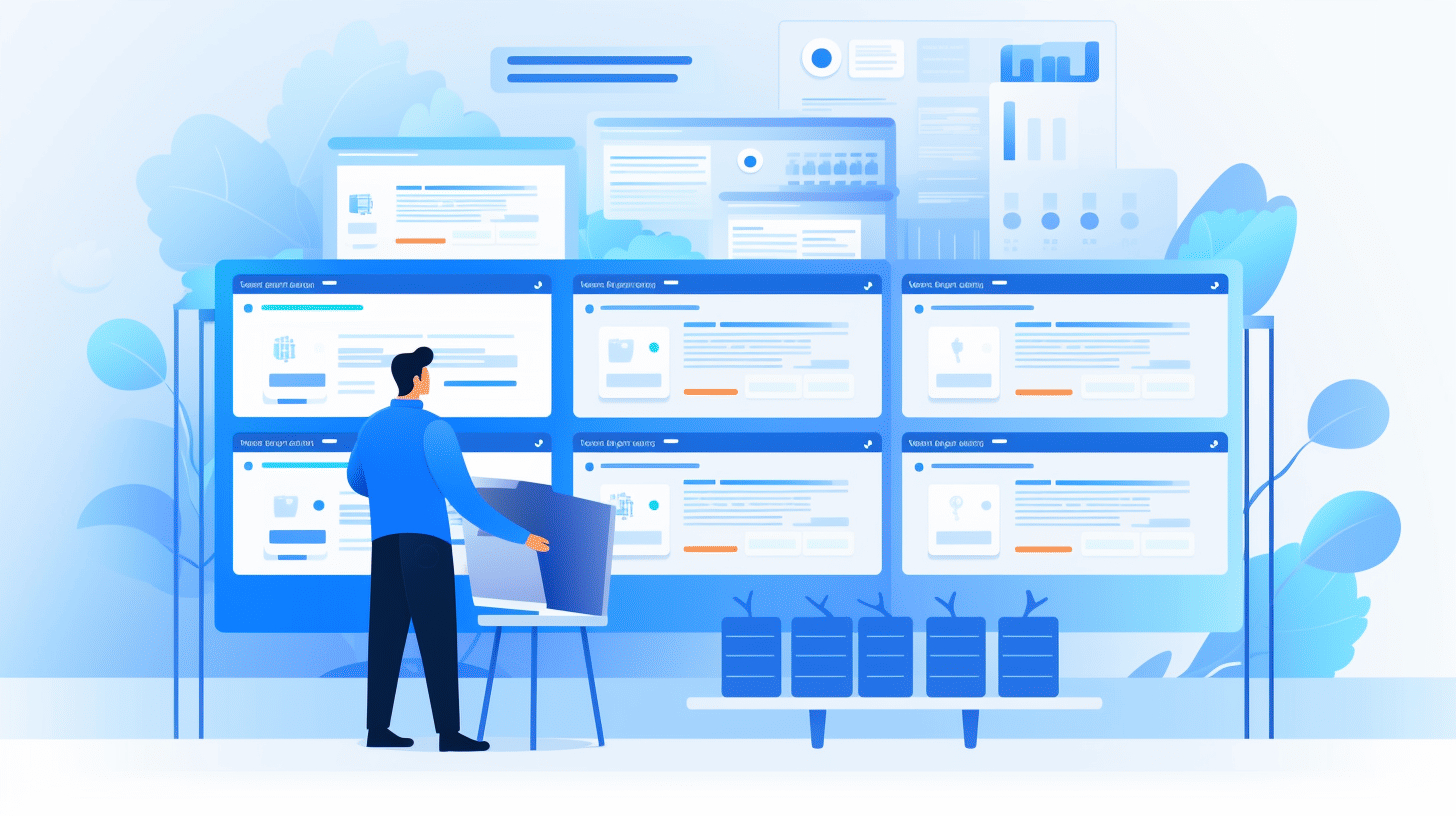在當今的數位環境中,網站已成為任何成功企業或線上企業的基石。它們是顧客與品牌互動、購買商品和收集資訊的主要平台。作為一名 Web 開發人員,保持領先地位並利用最新技術來開發現代、高效能的網站至關重要。近年來,Headless WordPress 就是這樣一項獲得廣泛關注的技術。
Headless WordPress 是一種創新的 Web 開發方法,它將網站的前端和後端分開。開發人員不再需要依賴 WordPress 的傳統主題和模板,而是可以利用 API 從 WordPress 後端獲取內容並使用任何前端技術顯示它。這種表示層的解耦提供了許多好處,例如增加了靈活性,提高了可擴展性和更好的效能。
在本文中,我們將探討 Headless WordPress 開發的最佳實務。我們將深入研究 CMS(內容管理系統)市場,了解 WordPress 在業界的主導地位,並仔細研究 Headless WordPress 及其優勢。此外,我們將討論 Headless CMS 軟體市場的經濟前景,並提供有關前端開發技術、WordPress 開發服務和實踐的見解。最後,我們將強調增強使用者體驗的重要性並為開發人員提供可行的建議。
所以,繫好安全帶,準備踏上令人興奮的 Headless WordPress 開發領域的旅程。無論您是經驗豐富的開發人員還是剛起步,這些最佳實踐都將為您提供知識和工具,以創建給用戶留下持久印象的尖端網站。讓我們開始吧!
CMS 市場和 WordPress 的作用
在當今的數位環境中,內容管理系統 (CMS) 在幫助企業和個人輕鬆創建和管理他們的網站方面發揮著至關重要的作用。有這麼多的選項可供選擇,選擇適合您需求的 CMS 可能會很困難。然而,有一個 CMS 憑藉其令人印象深刻的市場主導地位和廣泛的受歡迎程度脫穎而出 - WordPress。
了解 CMS 市場
CMS 市場競爭激烈,多家廠商競相爭取頭把交椅。有多種 CMS 選項可用,每種選項都有自己的一套特性和能力。一些流行的 CMS 平台包括 WordPress、Joomla、Drupal 和 Shopify 等。
WordPress 在市場上的主導地位
就 CMS 市場佔有率而言,WordPress 佔據主導地位。它已牢固地成為全球數百萬網站的首選 CMS。這就是為什麼 WordPress 成為網站所有者的首選:
- 方便使用: WordPress 的使用者友善介面甚至讓那些缺乏技術知識的人也能輕鬆使用它。其直覺的儀表板和拖放功能可讓使用者輕鬆建立和更新他們的網站。
- 龐大的插件生態系: WordPress 擁有超過 58,000 個可用插件,提供無與倫比的靈活性和自訂選項。從搜尋引擎優化到電子商務功能,幾乎所有可以想像到的需求都有插件。
- 回應主題: WordPress 擁有大量精美且反應迅速的主題庫。這些專業設計的模板使網站所有者無需豐富的設計技能即可創建視覺上令人驚嘆的網站。
- 強大的社區支持: WordPress 擁有龐大且活躍的用戶和開發者社群。這意味著只需單擊一下即可獲得協助、尋找資源以及了解最新趨勢和最佳實踐。
WordPress 的 CMS 市場份額
WordPress 在 CMS 市場的主導地位確實令人矚目。考慮以下統計數據:
- WordPress 目前在 CMS 市場的使用份額為 64.2%[1].
- WordPress 為互聯網的 43% 提供支持,表明其佔有相當大的市場份額[2].
- 所有網站中有 37% 使用 WordPress[3].
- WordPress 在內容管理領域佔有驚人的 65.2% 市場份額[4].
顯然,WordPress 在 CMS 市場中的影響力是無與倫比的。其用戶友好的介面、龐大的插件生態系統和強大的社群支援使其成為個人和企業的首選。
在當今動態的數位環境中,網站所有者必須保持領先地位。一個令人興奮的、越來越受歡迎的趨勢是“無頭 WordPress”,它將 WordPress 的強大功能與解耦的前端框架結合在一起。要了解有關 Headless WordPress 如何簡化您的網站管理的更多信息,請查看此文章 無頭WordPress工具.
Headless WordPress 簡介
在當今的數位環境中,企業和內容創作者不斷尋求創新方式向更廣泛的受眾傳遞他們的訊息。其中一項創新是 無頭 WordPress,一種提供前所未有的靈活性和控制力的現代網站開發方法。但是 Headless WordPress 到底是什麼,為什麼您應該考慮在下一個專案中使用它?
什麼是無頭 WordPress?
從本質上講,Headless WordPress 指的是一種架構,其中 WordPress 後端 (這 內容管理系統)與 前端 (這 使用者介面)。在傳統的 WordPress 設定中,後端和前端緊密相連。然而,使用 Headless WordPress,開發人員可以自由使用各種前端技術,例如 React、Angular 或 Vue.js 創造豐富且互動的使用者體驗。
「無頭」的概念是指網站的前端(「頭」)與後端(「主體」)的分離。這種解耦可以實現更大的靈活性和可擴展性。內容儲存和管理在 WordPress 中,而演示和用戶互動由單獨的前端應用程式處理。
無頭 WordPress 的好處
Headless WordPress 提供了許多優勢,使其成為企業和開發人員的誘人選擇。使用 Headless WordPress 設定的優點如下:
- 可擴充性和數據共享: 使用 Headless WordPress,您可以輕鬆地在多個平台上擴展您的網站,包括行動應用程式、智慧電視和物聯網裝置。解耦的架構使您可以輕鬆地在不同的應用程式之間共享數據,確保在所有平台上獲得一致的用戶體驗。
- 設計和內容靈活性: 透過使用 Headless WordPress,您可以完全控制網站的設計和呈現。由於前端與後端是分開的,您可以自訂使用者介面的每個方面以符合您品牌的獨特風格和要求。
- 改進的性能: Headless WordPress 的一個顯著優勢是它能夠提供極快的網站。透過分離前端和後端,您可以消除不必要的膨脹並優化兩個組件的性能。這最終會帶來更快的載入時間、更高的 SEO 排名和更好的用戶滿意度。
- 擴展內容可能性: Headless WordPress 的另一個好處是可以自由地以各種格式傳遞內容。無論是傳統網頁、行動應用程序,甚至是 AR 體驗,您都可以利用 WordPress 的強大功能來創建和管理吸引受眾的多功能內容。
為了更詳細地了解這些好處, 點這裡。 Headless WordPress 為企業、開發人員和內容創作者開闢了一個充滿可能性的世界,以建立創新和身臨其境的網路體驗。憑藉其靈活性、可擴展性和性能優化,Headless WordPress 在數位生態系統中越來越受歡迎也就不足為奇了。那麼,您準備好擁抱 Headless WordPress 的強大功能了嗎?
無頭 CMS 軟體市場的經濟前景
全球無頭 CMS 軟體市場正在經歷大幅成長,並將在未來幾年達到新的高度。預計到 2027 年價值將達到 16.286 億美元,複合年增長率 (CAGR) 達到 20.44%,顯然該行業的採用率和需求正在增加。
推動無頭 CMS 軟體市場成長的關鍵因素之一是跨多通路和裝置無縫內容交付的需求日益增加。隨著公司努力為受眾提供個人化和一致的體驗,無頭 CMS 解決方案提供了高效交付內容所需的靈活性和可擴展性。
讓我們仔細看看無頭 CMS 軟體市場的經濟前景,深入了解區域趨勢和未來成長機會。
美國無頭 CMS 軟體市場展望
美國在無頭 CMS 軟體市場佔有重要地位,預計到 2032 年價值將達到 13 億美元,複合年增長率為 19.81%。這可以歸因於塑造市場格局的幾個因素:
- 越來越多地採用基於雲端的技術: 基於雲端的無頭 CMS 軟體解決方案因其可擴展性、成本效益和易於訪問性而正在市場上獲得越來越大的關注。隨著美國企業優先考慮數位轉型,對基於雲端的無頭 CMS 軟體的需求預計將大幅增長。
- 電子商務與網路零售的興起: 電子商務和線上零售的快速成長帶來了對先進內容管理系統的需求,該系統可以處理大量產品資訊並透過各種管道無縫傳遞這些資訊。無頭 CMS 軟體使企業能夠有效地管理其產品目錄並提供個人化的購物體驗,從而推動了其在美國的採用。
- 強調全通路行銷: 美國以其活躍的營銷環境而聞名,各大品牌力求透過多種接觸點吸引顧客。無頭 CMS 軟體可讓企業管理跨各種管道的內容,包括網站、行動應用程式、資訊亭和物聯網設備,確保在所有平台上獲得一致的品牌體驗。
總之,無頭 CMS 軟體市場的經濟前景光明,在美國和全球範圍內都有巨大的成長機會。隨著企業注重提供個人化體驗、高效管理內容和擁抱數位轉型,對無頭 CMS 軟體的需求預計將飆升。請繼續關注這個充滿活力的市場,因為它將繼續發展並塑造內容管理的未來。
Headless WordPress 開發的最佳實踐
介紹:
開發無頭 WordPress 網站需要仔細考慮有助於其成功的各種因素。透過了解前端開發技術和 API、利用 WordPress 開發服務和實踐並優先考慮使用者體驗,開發人員可以創建強大且高效的無頭 WordPress 解決方案。
了解前端開發技術和 API
為了成功實現無頭 WordPress 網站,開發人員必須對前端開發技術以及如何有效整合 API 有深入的了解。以下是需要考慮的一些關鍵點:
- React、Angular 或 Vue: 選擇最適合專案要求的前端 JavaScript 函式庫/框架。這些庫有助於實現高效的渲染和資料綁定,從而實現流暢且響應迅速的使用者介面。
- RESTful API: 利用 WordPress 的 REST API 從 WordPress 後端取得和處理資料。這使得前端和內容管理系統之間能夠實現無縫通訊。
- GraphQL: 考慮將 GraphQL 與 REST API 一起使用以增強靈活性和效率。 GraphQL 允許開發人員精確地請求他們需要的數據,減少不必要的數據獲取並提高效能。
- UI 元件庫: 利用 Material-UI 或 Bootstrap 等 UI 元件庫來加速前端開發。這些庫提供了預先設計的組件,可以客製化以匹配網站的品牌和設計。
WordPress 開發服務與實踐
使用無頭 WordPress 時,優化開發流程至關重要。以下是一些值得考慮的最佳做法:
- 版本控制: 使用 Git 等版本控制系統來追蹤變更、與團隊成員合作並在必要時恢復到先前的版本。
- 程式碼品質: 編寫乾淨、模組化的程式碼以增強可維護性和可擴充性。遵守編碼最佳實踐,例如遵循命名約定並將代碼組織成單獨的功能和組件。
- 測試和調試: 進行全面的單元測試和整合測試以識別和修復任何潛在問題。利用調試工具和日誌框架來簡化調試過程。
- 效能優化: 透過縮小和壓縮 CSS 和 JavaScript 檔案來優化網站效能。利用快取外掛程式或內容傳遞網路 (CDN) 來縮短頁面載入時間。
提升使用者體驗
實施無頭 WordPress 解決方案的主要好處之一是能夠增強使用者體驗。請考慮以下做法:
- 響應式設計: 確保前端完全響應並針對不同的螢幕尺寸和設備進行了最佳化。這使得用戶可以在桌上型電腦、平板電腦和行動裝置上無縫存取和瀏覽網站。
- 輔助功能: 遵循無障礙指南,確保所有使用者(包括殘障人士)均可使用該網站。為圖像提供替代文本,使用語義 HTML,並結合適當的對比度以提高可讀性。
- 個人化和動態內容: 利用用戶資料和偏好提供個人化的內容和建議。利用動態內容功能顯示即時資訊和更新,創造動態且引人入勝的使用者體驗。
透過實施這些最佳實踐,開發人員可以利用無頭 WordPress 的強大功能來建立具有增強使用者體驗的高效能網站。
Headless WordPress 的安全性:了解如何在使用無頭 WordPress 滿足您的開發需求的同時確保網站的安全性和可靠性。
結論
總之,採用無頭 WordPress 開發為 Web 開發人員提供了無數好處,包括提高靈活性、提高效能和簡化內容管理。透過分離網站的前端和後端,開發人員可以利用最新的技術,創造引人入勝的使用者體驗,並更有效地適應不斷變化的數位環境。
為了充分利用無頭 WordPress 開發,了解各種可用的前端開發技術和 API 至關重要。利用 WordPress 開發服務和實踐也可以確保開發過程順利且有效率。此外,優先考慮使用者體驗和優化效能將有助於創建吸引和吸引訪客的網站。
使用 Managed-WP,您可以將無頭 WordPress 開發提升到新的水平。我們的優質託管 WordPress 雲端託管平台簡化了您的基礎設施,讓您可以自由地專注於創造卓越的數位體驗。此外,我們的專家團隊每年 365 天、每天 24 小時隨時待命,為您提供解決問題的協助。立即開始使用 Managed-WP 優化您的無頭 WordPress 開發: 連結到託管 WP
請記住,在快節奏的數位環境中,保持競爭領先需要創新的方法。無頭 WordPress 開發與 Managed-WP 等可靠的託管解決方案相結合,為 Web 開發人員提供了輕鬆建立尖端網站所需的工具。因此,不要猶豫,探索各種可能性並充分發揮您的 WordPress 專案的潛力。
常見問題解答
- 什麼是無頭 WordPress 開發?
無頭 WordPress 開發是一種將 WordPress 後端(CMS)與前端(表示層)分開的方法,允許開發人員對每個後端使用不同的技術。前端可以使用 React 或 Angular 等框架來構建,CMS 後端仍然是 WordPress。
- 為什麼開發人員會選擇無頭 WordPress 開發?
開發人員可以選擇無頭 WordPress 開發來提高靈活性、可擴展性和效能。它允許開發人員使用現代前端框架建立高度互動和動態的網站或行動應用程序,同時利用 WordPress 強大的內容管理功能。
- 無頭 WordPress 開發的最佳實踐是什麼?
無頭 WordPress 開發的一些最佳實踐包括:1. 正確分離後端和前端,2. 使用 WordPress REST API 從 CMS 獲取數據,3. 透過快取 API 響應優化性能,4. 實現伺服器端渲染以獲得更好的 SEO,5. 確保採取適當的安全措施。
- 無頭 WordPress 開發適合所有類型的網站嗎?
無頭 WordPress 開發並不適合所有類型的網站。它對於需要複雜或高度互動的使用者介面的網站或應用程式最為有益,例如電子商務平台、多平台應用程式或具有大量前端互動性的網站。
- 我可以將現有的 WordPress 主題和外掛程式與無頭 WordPress 開發一起使用嗎?
雖然可以將一些現有的 WordPress 主題和外掛程式與無頭 WordPress 開發結合使用,但可能需要定製或修改才能與解耦的前端無縫協作。開發人員通常更喜歡建立自訂主題或使用專為無頭 WordPress 開發設計的主題。



















